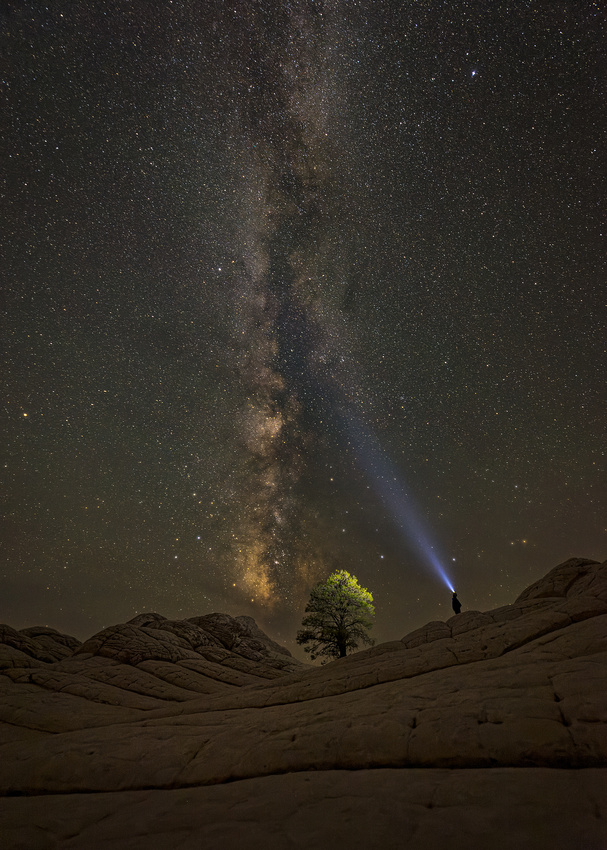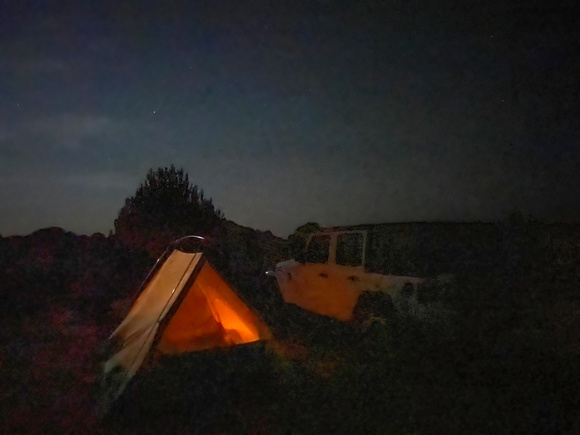Self Portrait


“A still more glorious dawn awaits. Not a sunrise, but a galaxy-rise. A morning filled with 400 billion stars. The rising of the Milky Way.”
― Carl Sagan, Cosmologist
The previous six days were tough. Smoke from the California wildfires greyed out the skies in the north. And severely clear skies south of the smoke were boring. Fellow photographer Jon Christofersen and I were hopeful that conditions would be favorable on Friday.
Where Am I?
The location is a 100- by 800-yard section of the Paria Plateau in the Vermillion Cliffs National Monument near Page, Arizona. Known as White Pocket, this small area features awe-inspiring slickrock with layers of orange, yellow, and white formations created over eons by mineral deposits and shaped by the elements. It’s a photographer’s dream.
There’s one reason the place isn’t overrun by visitors. The road there is downright gnarly. It rates a 5 on a scale of 1-5 (with 5 being most difficult). You need a high clearance, 4WD or 4X4 vehicle and about 2.5 hours to drive the 36 miles from highway 89 to White Pocket. If you get stuck, there’s usually no cell service and tow charges start at $1500.




There are plenty of signs telling you there is no shade, no water, no food, no cell service, and no direction signs at White Pocket. The best “no” is no light pollution. It’s incredibly dark at night making it an ideal location for landscape astrophotography.
We had the place completely to ourselves that evening.
What Is That?
At the bottom of the photo is an upwards sloping sandstone formation. It leads to, and frames, the only tree in White Pocket.
From left to right on the horizon are sandstone hills, the lone tree, our Milky Way galaxy over the tree, and me aiming a headlamp at the heavens from another hill.
We set up for the shot after moonset around 10:30 PM. By 12:30 AM, the Milky Way had moved from left to right directly over the tree. The dense core of stars (the galactic center) was clearly visible above the horizon and over the tree. I climbed the slope to the right of the tree, aimed my headlamp at the sky, and had Jon take the picture.
The cool, blue light of my LED headlamp contrasted nicely with the natural red browns of the Milky Way. And it illuminated part of the tree and surrounding hills. We switched places and I took a photo of Jon.
We spent another few hours photographing and staring at our galaxy. It spanned 180 degrees over our heads from the South in front of us all the way to the Northern horizon. Here we were staring at 400 billion neighboring stars with countless unseen planets orbiting those stars in a galaxy that formed13.2 billion years ago.
After finishing our photography, we hiked out to the parking area and curled up in our tent. It was 2:00 AM and we had a 5:45 AM wakeup alarm to catch the sunrise at White Pocket.


Thanks for looking,
Chuck